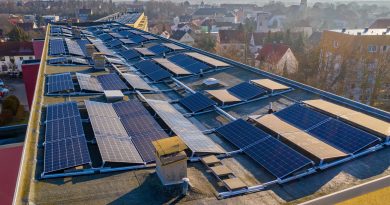How To Get Free Solar Panels From The Government?
Government subsidies and incentives play a crucial role in making solar panel installations more affordable and attractive for homeowners and businesses. This blog will help you understand the various types of subsidies available, how to calculate potential savings, and how to maximize the benefits of these incentives in India.
Table of Contents
- 1 Understanding Different Types of Solar Subsidies
- 1.1 State-wise Solar Incentives and Policies
- 1.2 1. National Policies of Solar:
- 1.2.1 Calculating Potential Savings with Government Subsidies
- 1.2.2 The Role of Government in Promoting Solar Energy
- 1.2.3 Tips for Maximizing Subsidy Benefits
- 1.2.4 Overcoming Challenges in Accessing Government Subsidies
- 1.2.5 The Future of Solar Subsidies and Incentives
- 1.2.6 Comparing Solar Subsidies with Other Financial Incentives
- 1.3 Comparison of Solar Incentives in India
- 1.4 Conclusion
Understanding Different Types of Solar Subsidies
1. Capital Subsidies: Direct financial assistance provided by the government to reduce the upfront cost of solar panel installations. This subsidy is often a percentage of the total installation cost. In India, this can range from 20% to 40% depending on the state and type of installation.
2. Tax Credits: Reductions in tax liability for individuals or businesses that install solar panels. The most common is the Income Tax Deduction under Section 80-IA of the Income Tax Act, which allows deductions for profits from solar power generation.
3. Rebates: Partial refunds provided by governments or utilities after the installation of a solar system. These are often offered to encourage solar adoption and can significantly lower the net cost.
4. Grants: Funds provided, typically by governments or non-profits, to support solar projects, particularly larger or community-based installations. Grants are often competitive and require an application process.
State-wise Solar Incentives and Policies
1. National Policies of Solar:
Jawaharlal Nehru National Solar Mission (JNNSM): Aimed at establishing India as a global leader in solar energy.
MNRE Subsidies: The Ministry of New and Renewable Energy (MNRE) provides subsidies for residential solar installations.
2. State-specific Incentives:
Maharashtra: Offers up to 40% subsidy on solar installations for residential and institutional sectors.
Gujarat: Provides incentives for residential solar rooftop systems and promotes solar power generation.
Tamil Nadu: Offers capital subsidies and incentives for solar installations.
Examples of other states like Rajasthan, Karnataka, and Andhra Pradesh
Calculating Potential Savings with Government Subsidies
- Example Calculation:
- Total installation cost: ₹3,00,000
- MNRE Subsidy (30%): ₹90,000
- Net cost after subsidy: ₹2,10,000
- Long-term Savings:
- Annual energy savings: ₹30,000
- Payback period calculation
- Total savings over the system’s lifespan
The Role of Government in Promoting Solar Energy
Governments support solar energy adoption to reduce carbon emissions, enhance energy security, and create jobs in the renewable energy sector. Successful initiatives like the Pradhan Mantri Kisan Urja Suraksha evam Utthaan Mahabhiyan (PM-KUSUM) scheme have set benchmarks in promoting solar energy in rural India.
Tips for Maximizing Subsidy Benefits
1. Research Thoroughly: Understand all available incentives at the central, state, and local levels.
2. Combine Incentives: Utilize both central and state subsidies to maximize savings.
3. Professional Assistance: Hire a professional to navigate the application process and ensure compliance with all requirements.
4. Timing: Install your system when the most favorable incentives are available.
Overcoming Challenges in Accessing Government Subsidies
1. Complex Application Processes: Simplify with professional help.
2. Limited Awareness: Stay informed through reliable sources and networks.
3. Eligibility Criteria: Ensure compliance with all requirements to qualify.
4. Funding Caps: Apply early to secure your subsidy before funds run out.
The Future of Solar Subsidies and Incentives
Governments are likely to continue supporting solar energy through subsidies and incentives, though programs may evolve. Increasing focus on sustainability and climate goals suggests robust support for renewable energy in the future.
Comparing Solar Subsidies with Other Financial Incentives
- Solar Subsidies vs. Tax Credits: Tax credits reduce your tax bill directly, whereas subsidies lower your initial costs.
- Solar Subsidies vs. Loans: Loans need to be repaid with interest, while subsidies and tax credits do not.
- Solar Subsidies vs. Feed-in Tariffs: Feed-in tariffs provide ongoing payments for energy generated, whereas subsidies reduce upfront costs.
Comparison of Solar Incentives in India
| Incentive Type | Description | Benefits | Example Program |
|---|---|---|---|
| Capital Subsidies | Direct financial assistance | Reduces upfront costs | MNRE Subsidies |
| Tax Credits | Reduction in tax liability | Lowers overall tax bill | Section 80-IA Income Tax Deduction |
| Rebates | Partial refunds post-installation | Immediate reduction in net cost | State-specific rebate programs |
| Grants | Competitive funds for projects | Supports larger/community projects | PM-KUSUM Scheme |
| Feed-in Tariffs | Payments for energy produced | Ongoing financial benefit | Various state-level feed-in tariffs |
| Loans | Financing with interest | Spreads cost over time, requires repayment | SBI Solar Loans |
Conclusion
Government subsidies and incentives are crucial for reducing the cost of solar panel installations and promoting renewable energy adoption in India. By understanding the various types of subsidies, calculating potential savings, and navigating the application process, homeowners and businesses can maximize the benefits of these programs.
Here at SolarClue®, we offer a smart, practical, and “beautiful” solution. You will be answered for all the questions related to Solar.
We provide all kinds of brands that are the Best Solar panels in India.
If you are the one who is planning for the solar power system. Don’t hesitate to contact our team!
Looking forward to empowering you with solar energy, just like hundreds of our other clients!
FAQs
1. What are the different types of solar subsidies available?
Capital subsidies, tax credits, rebates, grants, and feed-in tariffs.
2. How do I find out about state-specific solar incentives?
Research online, consult with solar installers, or visit government websites.
3. What are the benefits of government subsidies for solar installations?
Reduced upfront costs, lower energy bills, and faster return on investment.
4. How can I maximize the benefits of solar subsidies?
Combine multiple incentives, hire professionals for guidance, and stay informed about program changes.
5. What is the future outlook for solar subsidies and incentives?
Continued support is likely, with potential program evolutions to meet sustainability and climate goals.



